Inbox and Environment News: Issue 280
September 11 - 17, 2016: Issue 280
Marine Reserves: Consultation To Begin Following Release Of Independent Review
Media release: 5 September 2016 - The Hon. Josh Frydenberg MP, Minister for the Environment and Energy
I have asked the Director of National Parks to start a public consultation process to create new management plans for Australia’s world-leading network of marine reserves.
The new management plans will reflect sound science, protection of the environment and support sustainable industries.
The consultation process follows the release of the reports of the independent Commonwealth Marine Reserves Review.
This review was commissioned as part of the Coalition Government’s commitment to establish a world-class management programme for our marine parks following community concerns over a lack of consultation from Labor in 2012.
We asked two expert panels to thoroughly examine the science behind marine reserves and consult with local communities, Indigenous groups, scientists and commercial and recreational fishers.
The review received around 13,000 public submissions and held more than 260 meetings with interested groups.
The Coalition Government has already committed $56.1 million over four years to develop and implement these management plans. Management plans will support users such as community groups, recreational and commercial fishers, dive operators and promote local growth in tourism and protect our unique aquatic assets.
While noting the review’s recommendations the Government will assess the need for any industry assistance when it finalises management plans.
We will also consider the broader recommendations of the review, such as extending protection over the Bremer Canyon, which is renowned for its large aggregations of marine life including orcas, sperm whales, seals, sharks and giant squid.
Australia is a world leader in the creation of marine parks – we now have the opportunity to be a world leader in their management and will endeavour to finalise management plans by mid-2017.
Parks Australia Marine Reserves independent reports
Abbott Marine Network Review Exposes Australia's Oceans
Tuesday 6 September 2016: Media release - Australian Marine Conservation Society
A promise to be science-based has been ignored in favour of commercial exploitation by the Abbott-led review of Australia’s network of marine sanctuaries, the Australian Marine Conservation Society said today.
This broken promise would lead to a devastating loss of threatened marine life and uncertainty for business investment in Australia’s valuable dive tourism sector.
Federal Environment Minister Josh Frydenberg yesterday released the results of the Abbott Review. A centrepiece of the report proposes to cut back huge sanctuary protection in Queensland’s Coral Sea and expand commercial fishing in its place. This is comes at the very time our marine life is under increasing pressure from coral bleaching, mangrove die-off and disappearing kelp forests.
“The Coral Sea is the cradle of the Great Barrier Reef, and one of the last places on Earth where healthy populations of ocean giants like sharks, tuna and marlin remain,” said AMCS Marine Parks Campaign Manager Fiona Maxwell.
“It’s not only our unique marine life but our coastal communities, recreational fishers, and the valuable dive tourism sector who are the big losers in the Abbott Review report,” she said.
“The Abbott Review ignored overwhelming scientific evidence and community support calling for an increase in protections.
“More than 70 per cent of Australia’s massive ocean estate remains open to commercial fishing when all the scientific evidence points to the urgent need for a better balance between what we take and what we conserve,” she said.
“At a time when the world is creating large marine parks and our oceans are warming at an unprecedented scale, Australia is moving backwards.
"A major IUCN report was issued overnight detailing a major global review of ocean warming impacts. There are truly staggering shifts in our oceans, with bleaching corals, species movements and changes throughout the food chain. One of the recommendations from the report is to expand marine sanctuaries and yet we’re moving backwards at this critical time,".
Ms Maxwell also said that the Review contradicts itself – recognising the extensive science and consultation that led to creation of the 40 parks in 2012, but then proposing to wind back the protection in key hot spots.
"We urge Environment Minister Josh Frydenberg and Prime Minister Turnbull to reject the Abbott Review findings and instead make the national network of 40 marine parks and sanctuaries operational, as much of Australia’s most vulnerable marine areas have now been without protection for three years," Maxwell said. Cutting back science-based protections for marine life would undermine former Prime Minister John Howard’s legacy of creating ocean safe havens on the Great Barrier Reef and Great Australian Bight from exploitation. “The decision to create the world’s largest network of marine parks was based on scientific assessment and consultation that John Howard put in place,” Ms Maxwell said.
“Sanctuaries for marine life on the Great Barrier Reef have created a booming tourism industry and local business owners have been hard hit by the impacts of the recent coral bleaching event. This is yet another blow to Queensland's tourism at a time when they are seeking the certainty long term conservation measures provide for the future”, she said. Message from the Director of National Parks: Release of Review reports and preparation of reserve management plans
Australia is a leader in marine management, with one of the largest marine protected areas in the world.
State Governments and the Commonwealth are committed to establishing a National Representative System of Marine Protected Areas. By doing this we are protecting amazing marine biodiversity and a full range of ecosystems and habitats that will provide us with multiple community and environmental benefits for years to come.
As the Director of National Parks I have commenced the statutory process to develop draft management plans for 44 of these important reserves managed by Parks Australia on behalf of the Commonwealth Government and her peoples.
Together with Parks Australia staff I will be developing draft management plans for the marine reserves in the North, North-west, South-west and Temperate-east networks and the Coral Sea reserve. These reserves are located in Commonwealth waters, typically beyond the 3 nautical mile coastal waters of the States and the Northern Territory. They are adjacent to waters managed by State and Territory governments and a number are adjacent to marine parks and reserves managed by State agencies.
I plan to use recommendations contained in the recently released independent Commonwealth Marine Reserves Review reports from the Expert Scientific Panel and Bioregional Advisory Panel and comments sent during this first phase of the statutory process to prepare the draft management plans. The reports are the product of extensive consultation and provide an important reference point as we move towards finalisation of Australia’s national network of Commonwealth marine reserves.
The public notice that outlines this process is here.
Management plans provide for the protection and conservation of the marine reserves by setting out the arrangements for management of activities within reserves for a period of 10 years. They state how natural features, heritage and other values are to be protected and conserved and set out the rules about what activities can be done in reserves and where. The plans also provide certainty to communities by recognising where actions may be needed to support local and regional economies and industries and provide opportunities for people to experience and enjoy these areas within a well managed and balanced system. Management plans also recognise the long term connection of Indigenous people to these seascapes and their cultural obligations to look after these special areas.
To make these places as successful as possible we need your input and feedback on the recommendations in the review in this first phase of consultation.
Once we have reviewed all of the comments in this first phase we will finalise the draft management plans. These draft plans will be put out for public comment too so we can double check them with you before we present them to the Minister for his consideration and approval.
I strongly encourage you to read the reports and provide me with your feedback on the independent review’s recommendations. The easiest way to make a submission is to emailmanagementplanning.marine@environment.gov.au. You can send feedback until 11 October 2016.
During the planning and consultation processes, activities can continue to be conducted in the same way they have since the reserve networks were declared, until the new management plans come into effect. The management plan for the South-east Commonwealth Marine Reserves Network is already in place and it won’t be part of this process.
I am very much looking forward to hearing from you about what you think should be included in the draft management plans. I am also looking forward to finalising the plans and working with you on the important job of managing Australia’s marine parks – an amazing and inspirational initiative that will make us proud for generations to come.
Sally BarnesDirector of National Parks
Financial Support For Solar Projects
September 8, 2016: NSW GovernmentFive large-scale solar installations across regional NSW will be built after securing $34.9 million in funding from the Australian Renewable Energy Agency (ARENA).
The installations in Dubbo, Glen Innes, Griffith, Parkes and Manildra have a total capacity of 162.3 megawatts and will provide enough clean electricity to power around 62,000 homes or 2800 schools and save 350,000 tonnes of greenhouse gas emissions per year.
NSW Minister for Industry, Resource and Energy Anthony Roberts welcomed the announcement of financial support for the new projects.
“NSW leads Australia in large-scale solar and over the past five years, the share of NSW-based solar generation has increased six-fold,” Mr Roberts said.
“Today’s announcement to provide funding for these new projects underscores the growing importance of the NSW solar industry and the role it will play in providing for the state’s future electricity needs.”
The ARENA-funded projects will support up to 800 jobs during construction. The five new facilities, once completed, will reduce emissions by the equivalent of taking 78,000 cars off the road.
More large-scale solar projects are in the planning system with an estimated 1000 MW of generating capacity.
To find out more, visit the Resources and Energy website
Paws For Thought On Threatened Species Day
Wednesday 7 September 2016: Media Release - Mark Speakman, Minister for the EnvironmentA crack team of professional sniffer dogs will be unleashed to help protect and conserve the state’s threatened species as part of the NSW Government’s five year $100 million Saving our Species program.
The team of 10 English springer spaniel and cocker spaniel detectives, trained to sniff out endangered species, would be put through their paces to mark National Threatened Species Day, Environment Minister Mark Speakman said.
The four-legged detectives are trained to sniff-out threatened species such as koalas, quolls, eastern bristlebirds and the Bell’s Turtle. They will be deployed on some of the Government’s newly established 240 threatened species projects.
“We have this class of canines all barking up the right tree – they won’t roll over until they’ve picked up the scent,” Mr Speakman said.
“Penny, the English springer spaniel, has already been successful in detecting the odour of endangered coastal emu birds in places where there is no physical evidence obvious to humans that the birds have been there.”
Mr Speakman said the NSW Government had allocated $16 million to this year’s new 240 projects.
Office of Environment and Heritage Senior Threatened Species Officer Lynn Baker said the NSW Government’s detection dogs have the best nose in the business.
“A detection dog’s nose is more than one thousand times better than a human’s at detecting a target scent and these dogs can find a species when all of our other standard survey techniques fail,” Ms Baker said.
National Threatened Species Day is held on 7 September each year to commemorate the death of the last Tasmanian tiger at Hobart Zoo in 1936. NSW Oyster Industry Sustainable Aquaculture Strategy Third Edition 2016
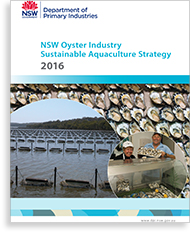 The NSW Oyster Industry Sustainable Aquaculture Strategy (OISAS):• identifies those areas within NSW estuaries where oyster aquaculture is a suitable and priority outcome;• secures resource access rights for present and future oyster farmers throughout NSW;• documents and promotes environmental, social and economic best practice for NSW oyster farming and ensures that the principles of ecological sustainable development, community expectations and the needs of other user groups are integrated into the management and operation of the NSW oyster industry;• formalises industry's commitment to environmental sustainable practices and a duty of care for the environment in which the industry is located;• provides a framework for the operation and development of a viable and sustainable NSW oyster aquaculture industry with a clear approval regime and up-front certainty for existing industry participants, new industry entrants, the community and decision makers;• identifies the key water quality parameters necessary for sustainable oyster aquaculture and establishes a mechanism to maintain and where possible improve the environmental conditions required for sustainable oyster production; and• ensures that the water quality requirements for oyster growing are considered in the State's land and water management and strategic planning framework.
The NSW Oyster Industry Sustainable Aquaculture Strategy (OISAS):• identifies those areas within NSW estuaries where oyster aquaculture is a suitable and priority outcome;• secures resource access rights for present and future oyster farmers throughout NSW;• documents and promotes environmental, social and economic best practice for NSW oyster farming and ensures that the principles of ecological sustainable development, community expectations and the needs of other user groups are integrated into the management and operation of the NSW oyster industry;• formalises industry's commitment to environmental sustainable practices and a duty of care for the environment in which the industry is located;• provides a framework for the operation and development of a viable and sustainable NSW oyster aquaculture industry with a clear approval regime and up-front certainty for existing industry participants, new industry entrants, the community and decision makers;• identifies the key water quality parameters necessary for sustainable oyster aquaculture and establishes a mechanism to maintain and where possible improve the environmental conditions required for sustainable oyster production; and• ensures that the water quality requirements for oyster growing are considered in the State's land and water management and strategic planning framework.
Also see:all Maps-Area HERE
NSW Oyster Industry Sustainable Aquaculture Strategy 2016 - HAVE YOUR SAYWhat's this about?The NSW Oyster Industry Sustainable Aquaculture Strategy (OISAS) is the key management and policy document for the NSW oyster industry.OISAS currently contains:
• Best practice guidelines;• A code of conduct;• Identification of areas where oyster farming is a priority;• Water quality protection and improvement measures; and• Streamlined approval for oyster leases in Priority Oyster Aquaculture Areas.
The OISAS was first gazetted in December 2006 and has now been revised and updated.
Have your sayThe 2016 Draft OISAS is on public exhibition for 14 days from Wednesday 31 August until Tuesday 13 September 2016.
To view the 2016 Draft OISAS online, visit the DPI Website.Send your feedback via email to:Date: Aug. 31 - Sep. 13, 2016Time: 9:00am — 5:00pm
 The NSW Oyster Industry Sustainable Aquaculture Strategy (OISAS):
The NSW Oyster Industry Sustainable Aquaculture Strategy (OISAS):Marine Fisheries And Aquaculture
Draft Report
This draft report was released on 31 August 2016. You are invited to examine the draft report and to make written submissions by Friday 14 October 2016.
The final report is expected to be handed to the Australian Government by December 2016.
Overview - Marine Fisheries and Aquaculture - Draft report (PDF - 596 Kb)
Marine Fisheries and Aquaculture - Draft report (PDF - 2048 Kb)
Better management of Australia's fisheries needed to ensure sustainability and valueAugust 31, 2016: Media Release - Productivity Commission, Australian GovernmentSlow adoption of best practice in the management of commercial fisheries, and limited recognition of the impacts and value of recreational fishing, are imposing unnecessary costs, constraining community benefits from fisheries, and putting pressure on some stocks, according to the Productivity Commission.
In a draft report released today, the Commission says management approaches need to better reflect the fact that there are limits to the catch from wild capture fisheries. Therefore, historical attitudes to prefer one group over another will need to change if Australia is to sustain both recreational and commercial fishing into the future.
'Controls over commercial fishing in most fisheries are too prescriptive. We know that tradeable quotas generally work, but we apply them in only one-quarter of fisheries. Conversely, there is an attitude of almost benign neglect toward recreational fishing. This is despite there being millions of recreational fishers in Australia and that, with the help of technology such as relatively cheap locating sonars, recreational catch now rivals or exceeds commercial catch for some species', said Commissioner Melinda Cilento.
Most commercial fishing is still regulated through controls over fishing methods, such as numbers of allowable fishing days or size of boats. This is discouraging innovation and inhibits fishers from introducing more cost-effective practices.
'Reform across the sector is needed to reinvigorate the commercial fishing industry,' she said.
The rising sophistication and affordability of scanning technology and vessels has increased recreational fishers' ability to fish further offshore and more intensively. The limited knowledge we do have suggests this is putting pressure on some species. Despite the probability that this will increase in future with population growth and use of new fishing technologies, recreational fishing is sporadically monitored.
'While there are bag limits and other controls on recreational fishing, the nation doesn't have a handle on how overall participation is changing or how the level of catch is changing in most areas,' said Commissioner Melinda Cilento.
'This lack of knowledge makes it difficult to make decisions on how access to fisheries should be shared or what additional services or facilities should be provided for recreational fishers,' she said.
The Commission recommends that state and territory governments license all recreational fishers, with the focus being on a low-cost licence with higher reporting effort by all parties.
'We recognise that recreational fishing is important to many people and coastal communities; sometimes it is more important economically than commercial fishing.'
'We have recommended licensing to ensure recreational fishing is sustainable and better recognised in fishery management decisions as a much-loved pastime for many Australians,' Commissioner Melinda Cilento said.
The Productivity Commission released its draft report on Marine Fisheries and Aquaculture today and will be conducting public hearings around Australia where people can talk about issues raised in the report. To attend a hearing or make a submission for the final report people should go to the website at www.pc.gov.au
Landholders’ Right To Refuse (Gas And Coal) Bill 2015
This Private Member’s Bill provides that landholders have the right to refuse the undertaking of gas and coal mining activities by corporations on their land without prior written authorisation; sets out the requirements of a prior written authorisation; provides for relief which a court may grant a land owner when prior written authorisation is not provided; prohibits hydraulic fracturing for coal seam gas, shale gas and tight gas by corporations; and provides for civil penalties.
The Bill was first introduced in March 2015, has had its second reading in the House of Representatives and is currently before the Senate.
Put In Your Ten Cents' Worth On Deposit Scheme
The biggest initiative to tackle litter in the state’s history has moved a step closer to reality, with draft legislation on the NSW Government’s 10-cent container deposit scheme going out to public consultation, Environment Minister Mark Speakman said today.
The scheme, which will mean eligible drink containers between 150 ml and three litres can be returned for a 10 cent refund, is scheduled to roll out across the state in July 2017.
Mr Speakman said the container deposit scheme (CDS) was now at the stage of consulting with the public on the details.
“I was thrilled to announce in May along with Premier Mike Baird that NSW was delivering on a key election promise and introducing a long-awaited container deposit scheme – something the community had been asking for for decades,” Mr Speakman said.
“We are looking at several measures to reduce costs of the scheme, including working with Queensland on opportunities for a single scheme coordinator and driving competition by allowing for multiple network operators.”
A draft bill and discussion paper, on public exhibition until Wednesday, 21 September, aims to provide details to the public on how the scheme was proposed to work, including:
- How the scheme will be coordinated
- How the network of collection points will work
- How refunds will work including the potential for contactless (mobile phone) refunds
- How the scheme will interact with kerbside recycling, and
- Roles and obligations under the scheme
“From next year the people of NSW will be able to return most drink containers and receive 10 cents, while playing a part in reducing litter volume by 40 per cent by 2020, one of the Premier’s key priorities,” Mr Speakman said.
The draft Waste Avoidance and Resource Recovery Amendment (Container Deposit Scheme) Bill 2016 and Regulatory Framework Discussion Paper are open for public consultation until 21 September and feedback is welcome.
View the documents and submit comments online at www.epa.nsw.gov.au/waste/cds-draft-bill-consultation.htm
The biggest initiative to tackle litter in the state’s history has moved a step closer to reality, with draft legislation on the NSW Government’s 10-cent container deposit scheme going out to public consultation, Environment Minister Mark Speakman said today.
The scheme, which will mean eligible drink containers between 150 ml and three litres can be returned for a 10 cent refund, is scheduled to roll out across the state in July 2017.
Mr Speakman said the container deposit scheme (CDS) was now at the stage of consulting with the public on the details.
“I was thrilled to announce in May along with Premier Mike Baird that NSW was delivering on a key election promise and introducing a long-awaited container deposit scheme – something the community had been asking for for decades,” Mr Speakman said.
“We are looking at several measures to reduce costs of the scheme, including working with Queensland on opportunities for a single scheme coordinator and driving competition by allowing for multiple network operators.”
A draft bill and discussion paper, on public exhibition until Wednesday, 21 September, aims to provide details to the public on how the scheme was proposed to work, including:
- How the scheme will be coordinated
- How the network of collection points will work
- How refunds will work including the potential for contactless (mobile phone) refunds
- How the scheme will interact with kerbside recycling, and
- Roles and obligations under the scheme
“From next year the people of NSW will be able to return most drink containers and receive 10 cents, while playing a part in reducing litter volume by 40 per cent by 2020, one of the Premier’s key priorities,” Mr Speakman said.
The draft Waste Avoidance and Resource Recovery Amendment (Container Deposit Scheme) Bill 2016 and Regulatory Framework Discussion Paper are open for public consultation until 21 September and feedback is welcome.
View the documents and submit comments online at www.epa.nsw.gov.au/waste/cds-draft-bill-consultation.htm
Nutrient Pollution Is Changing Sounds In The Sea
September 6, 2016: University of AdelaideNutrient pollution emptying into seas from cities, towns and agricultural land is changing the sounds made by marine life -- and potentially upsetting navigational cues for fish and other sea creatures, a new University of Adelaide study has found.
Published online in the journal Landscape Ecology, the research found that marine ecosystems degraded by 'eutrophication', caused by run-off from adjacent land, are more silent than healthier comparable ecosystems.
This marine 'soundscape' comes largely from the snapping of shrimps, but also the rasping of sea urchins and fish vocalisations.
The researchers -- PhD graduate Tullio Rossi, Associate Professor Ivan Nagelkerken and Professor Sean Connell from the University's Environment Institute -- studied kelp forests and seagrass beds in South Australia's St Vincent's Gulf, many of which have been impacted by excessive nutrients washing into the sea, particularly along the metropolitan coast of Adelaide.
They compared audio recordings of these polluted waters with audio recordings at natural high-CO2 underwater volcanic vents, which show what water conditions are predicted to be like at the end of the century under global ocean acidification.
Remarkably, they found the same pattern of sound reduction in both locally degraded ecosystems and those that show what oceans are expected to be like under climate change.
"Kelp forests and seagrass beds are important ecosystems for commercial fishing and maintenance of marine biodiversity," says study leader Associate Professor Ivan Nagelkerken, in the University of Adelaide's Environment Institute.
"They also function as nursery habitats for a range of species. But the decrease in sound we found in these degraded ecosystems due to local eutrophication is of the same large magnitude that we find in ecosystems that will be affected by global ocean acidification.
"We know that sound is very important for some species of fish and invertebrates to find sheltering habitats in reefs and seagrass beds. The demise of biological sounds is likely to have negative impacts on the replenishment of fish populations."
The study also suggests that soundscapes may be a suitable management approach to evaluating the health of ocean ecosystems -- a new cost-effective monitoring tool.
"Because ocean acidification acts at global scales, local reduction of nutrient pollution as a management intervention will strengthen the health of our marine ecosystems, and set them up for coping better with global climate stressors," says Professor Sean Connell.
The above is reprinted from materials provided by University of Adelaide.
AFMA Welcomes New FRDC Chair
6 September 2016The Australian Fisheries Management Authority (AFMA) welcomes the Hon. Ron Boswell as the new Chair of the Fisheries Research and Development Corporate (FRDC).
“Mr Boswell brings a wealth of experience into this position and I congratulate him on his appointment,” AFMA’s CEO Dr James Findlay said.
“With more than 30 years experience in the Australian Senate, and a keen interest and advocate of Australia’s fishing industry, Mr Boswell is well suited to lead the FRDC.
“AFMA looks forward to working with Mr Boswell and continuing to the strong relationship we have with FRDC.
“I would also like to thank the outgoing Chair, the Hon. Harry Woods for his significant contribution to the Australian fishing industry since his appointment as Chair of the FRDC in 2010.
“In the six years, Mr Woods actively worked with the three sectors of this fishing industry (commercial, recreational and Indigenous) to help make significant improvements to the industry and create real opportunities for sustainable industry growth.
“On behalf of AFMA, thank you.”
FRDC play an important role in delivering, research, development and extension activities in Australia fisheries to help ensure their sustainability.
AFMA draws on research from FRDC, along with other scientific institutions, to help inform Commonwealth fisheries management and ensure that the latest available science is being used as part of the decision making process.
For more information on the management of Commonwealth fisheries visitafma.gov.au. Mr Boswell’s biography can be found at frdc.com.au
Aussie Backyard Bird Count 2016
This year, the Aussie Backyard Bird Count will be back, bigger and better than ever. With more than a million birds counted last year, how many will we see in 2016? It’s all happening during Bird Week, 17–23 October. Let’s make every bird count!
Discover the Aussie Backyard Bird Count app!A 'how to' guide for using the Aussie Backyard Bird Count app.The app is currently available on:
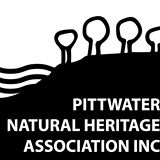
SUNDAY MORNING BIRDWATCHING with PNHA
Would you like to know more about our local birds and explore our bushland reserves? Then join us on one of our bird walks:
PNHA Birdwatching 8am Sunday 25 September, Warriewood Wetlands, followed by Morning Tea and a talk on the Birds of Warriewood Wetlands at 9.30am.
Warriewood Wetlands is one of Sydney’s birding hotspots with over 150 species recorded. Come along and see how many you can find.
At 9.30am, after the walk, join us for morning tea and a talk on the birds of Warriewood Wetlands provided by PNHA. We are holding this event as part of the Friends of Narrabeen Lagoon Catchment's Narrabeen Spring Celebration.
Meet: 8am for the walk, and/or come at 9.30am for the morning tea and talk, Katoa Close, off Garden St, North Narrabeen.
Bring: For the walk: Binoculars, water, insect repellent, hat. Morning tea will be provided (see Bookings)
Bookings: Please book this time, for catering. Text or call 0439 409 202.
Our last walk of the year is at 7.30am on Sunday 27 November at Warriewood Wetlands. The summer migratory species will have arrived and the Wetlands will be home to nesting birds and birds with young. there should be plenty to see.Meet at Katoa Close, North Narrabeen.
Most walks last a couple of hours. Bring binoculars and morning tea for afterwards if you like. Contact pnhabirdwatching@gmail.com for details of each walk.

SUNDAY MORNING BIRDWATCHING with PNHA
Would you like to know more about our local birds and explore our bushland reserves? Then join us on one of our bird walks:
PNHA Birdwatching 8am Sunday 25 September, Warriewood Wetlands, followed by Morning Tea and a talk on the Birds of Warriewood Wetlands at 9.30am.
Warriewood Wetlands is one of Sydney’s birding hotspots with over 150 species recorded. Come along and see how many you can find.
At 9.30am, after the walk, join us for morning tea and a talk on the birds of Warriewood Wetlands provided by PNHA. We are holding this event as part of the Friends of Narrabeen Lagoon Catchment's Narrabeen Spring Celebration.
Meet: 8am for the walk, and/or come at 9.30am for the morning tea and talk, Katoa Close, off Garden St, North Narrabeen.
Bring: For the walk: Binoculars, water, insect repellent, hat. Morning tea will be provided (see Bookings)
Bookings: Please book this time, for catering. Text or call 0439 409 202.
Our last walk of the year is at 7.30am on Sunday 27 November at Warriewood Wetlands. The summer migratory species will have arrived and the Wetlands will be home to nesting birds and birds with young. there should be plenty to see.Meet at Katoa Close, North Narrabeen.
Most walks last a couple of hours. Bring binoculars and morning tea for afterwards if you like. Contact pnhabirdwatching@gmail.com for details of each walk.
United Wambo Open Cut Coal Mine Project
Street 134 Jerrys Plains RoadCity WarkworthExhibition Start 11/08/2016Exhibition End 22/09/2016
See all available documents and have your say here
A Joint Venture project between United Collieries and Wambo Coal which combines the existing open cut operations at Wambo with a proposed new open cut at United.
The Project will utilise the existing Wambo Mining Infrastructure Area (MIA), Coal Handling and Preparation Plant (CHPP) and train loading facility. The Project anticipates delivering up to 6Mtpa of product coal, providing jobs for around 500 employees with a life of mine of approximately 23 years. The Project proposes to relocate a 2km section of the Golden Highway and a section of 330kV powerlines to optimise coal recovery in the United Open Cut.
Extent of Mining Areas: Refer to Figure 1.3 - The project proposes realignment of the Wambo Open Cut boundary to maximise resource recovery. The realignment would result in approximately 5 hectares of additional disturbance for the Wambo Open Cut mine.
The Proposed United Open Cut mine is situated to the weast of the existing Wambo operations (refer to Figure 1.3)
The conceptual staged mine plans are shown on Figure 3.2 to Figure 3.6
Operating Hours 24 hours a day, 7 days a week
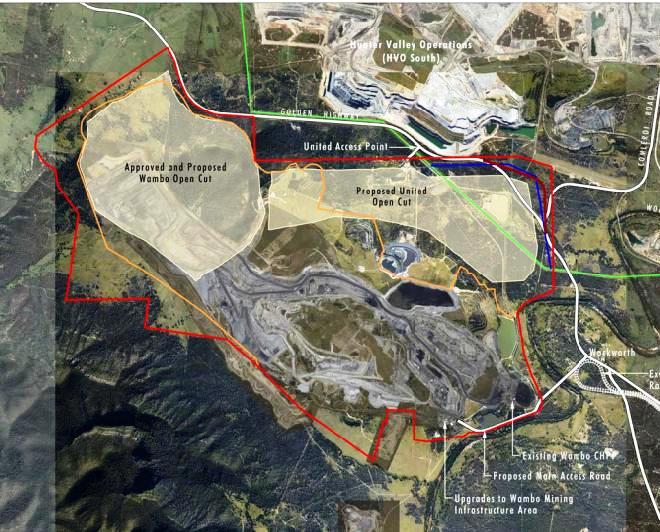
Figure 1.3
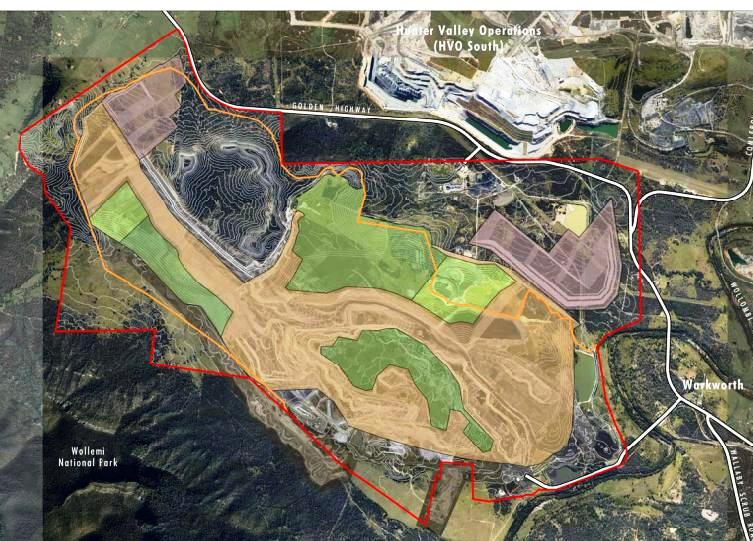
Figure 3.2


Tomato Festival Sydney 2017
Saturday 18 & Sunday 19 February
The award-winning Tomato Festival Sydney will be celebrating its fourth year in 2017. The Festival Village will once again be the epicentre showcasing celebrated Australian producers and artisans selling quality produce together with insightful cooking demonstrations and tastings.
There will be plenty of opportunities to sample tomatoes with the ever popular Taste Test featuring heirloom and other varieties. Food stalls, music, café and bar where visitors can relax over delicious tomato inspired menus.
The longest tomato lunch which was a sell out in 2016 for 250 people on one very long table will be back, bigger and better than ever!
Free gardening talks with Royal Botanic Garden staff and industry experts will also be available over the weekend along with plant sales and free guided walks.
Loads of children’s activities including nature based adventures, workshops and outdoor fun, so there’s something for everyone to enjoy.
For those with a green thumb and skills in the kitchen there will be another heated competition for the best home-grown tomato.
In 2017 there will be new and exciting additions to the program – stay tuned.
Location: Royal Botanic Garden Sydney Age:Fun for all the familyTransport info:Public transport recommended. Limited parking available.Price:Free entry. Some workshops, activities and lunches are ticketed.
International Community Condemns Japanese Whaling - Again
Wednesday 7 September 2016: Media release - Australian Marine Conservation Society
The World Conservation Congress has just passed a motion condemning so-called ‘scientific’ whaling by the Government of Japan. The Member’s Assembly of the IUCN today formally adopted a motion calling on Japan to stop killing whales for research in the Southern Ocean and the North Pacific.
Since the global ban (moratorium) on whaling was introduced in the 1980s, Japan has killed more than 10,000 Antarctic whales under the guise of ‘research’. In 2014 the world’s highest court, the International Court of Justice, ruled that Japan’s Antarctic whaling program was illegal and should stop. Despite this ruling, the government of Japan resumed Southern Ocean whaling the following year in the summer of 2015-16.
“With today’s motion at the World Parks Congress, the international community has spoken yet again,” said AMCS Director, Darren Kindleysides from the Congress.
"This is the latest in a long line of embarrassing rejections, but will the Government of Japan sit up and listen?
“Japan’s so-called scientific whaling is unnecessary, unscientific and must cease.
“Last summer, the government of Japan killed 333 minke whales under the guise of ‘scientific’ research, and they plan to catch almost 4,000 in the next 12 years.
“The Australian government must redouble their efforts to halt Japanese whaling in the Southern Ocean and must challenge Japan when the International Whaling Commission meets in October this year,” Kindleysides said.
The IUCN World Conservation Congress is the world’s leading environmental summit. Meeting every four years. Around 9,000 delegates are attending the 2016 meeting in Hawaii from 1,200 member organisations. There are government delegations from 160 countries, including both Australia and Japan.
The theme of the 2016 Congress is “Planet at the Crossroads” and is debating the most pressing challenges facing our environment. In addition to passing the motion condemning ‘scientific’ whaling today, the Members’ Assembly of the Congress adopted several other important motions to conserve our oceans, including international action to tackle marine debris pollution, to advance the conservation of sharks, rays and migratory shorebirds and to progress protected areas in Antarctica and the Southern Ocean.New maps provide analysis of NSW fish communities and threatened species
31 Aug 2016: NSW Dept. DPINSW Department of Primary Industries (DPI) has released ground breaking results of a large scale analysis of the status of fish communities and threatened fish species distributions across NSW, which will feed into future strategic natural and land use planning programs.
NSW DPI Aquatic Ecosystems Program Leader, Marcus Riches, said the NSW Fish Community and Threated Species Distribution Project provides insight via state-wide, fine scale maps which identify the status of fish communities and where threatened species are known and likely to occur.
“Fish and fish habitats underpin the productivity of our State’s fisheries resources, and their status or health is a good measure of how we are managing our broader landscapes,” said Mr Riches.
“The Fish Community and Threatened Species Distribution Project is part of a broader approach to recognise the importance of scientific data to inform and guide strategic regional planning processes.
“This is the first time scientific knowledge of NSW fish communities and threatened species has been analysed and depicted at the river reach scale and applied consistently across the state.”
The project consolidates 20 years of data from biological surveys and, combined with complex species distribution modelling, provides insight into key fish communities.
A state-wide map indicates the status of fish communities across NSW, as well as individual species distributions for most of our freshwater threatened species.
“DPI research staff have already applied the results to determine the potential location of the threatened southern pigmy perch and combined with state of the art E-DNA testing to eliminate the potential of pest species threats, have been able to identify critical refuge areas in need of protection.
“In partnership with LLS we have now put measures in place to ensure these refuge areas are protected from incursions of redfin,” Mr Riches said.
This work in the future will contribute to a strategic planning framework, which will integrate aquatic biodiversity considerations into planning processes.
The project findings will provide a significant contribution to development planning and assessment processes, threatened species recovery actions, ecosystem rehabilitation, water management and future research endeavours.
Funding for the project is from the National Partnership Agreement on Coal Seam Gas and Large Coal Mining Developments.
More informationVisit Threatened species distributions in NSW for maps and accompanying reports from the NSW Fish Community Status Project.NSW Call to community and government groups to apply for local environmental grants
Media release: 15 August 2016 – NSW Office of Environment and Heritage (OEH)
A total of $4 million in grant funds is available to community groups and government entities for a range of local environment restoration and improvement projects under the NSW Environmental Trust’s 2016/17 Restoration and Rehabilitation Grant Program.
Terry Bailey, Chief Executive, NSW Office of Environment and Heritage and Trust Secretary said the grants will deliver grassroots funding to local environmental projects that restore, protect and enhance a variety of NSW environments.
“This valuable grant program has been running for over 20 years, making it one of the longest running environmental grant programs in Australia,” Mr Bailey said.
“Grants are awarded to help protect important ecosystems, to restore degraded environments and care for habitats of rare and endangered flora and fauna.
“I encourage community groups, not-for-profit and government entities from across the state to apply for a grant and help their local communities protect and conserve our vital natural environment.
“Fifty-six grants were awarded under this program last year and their projects are now tackling a number of local environmental issues.
“Thanks to this grant program landholders, local councils, state government agencies and community groups are now working to restore habitats for native and endangered species, improve water quality and rehabilitate wetland areas.
“As an example, Greening Australia’s $96,730 project is helping improve habitat for the vulnerable Glossy Black Cockatoo. Working alongside landholders, 5,000 trees are being planted and community seed collection and bird identification workshops are taking place.”
Applications open for the 2016/17 round of the Restoration and Rehabilitation Grant Program on 15 August 2016. Grants between $5,000 and $100,000 are available. Applications close on 26 September 2016.
Visit the Environmental Trust website for applications and further information: www.environment.nsw.gov.au/grants/restoration.htm
NSW Call to community and government groups to apply for local environmental grants
Media release: 15 August 2016 – NSW Office of Environment and Heritage (OEH)
A total of $4 million in grant funds is available to community groups and government entities for a range of local environment restoration and improvement projects under the NSW Environmental Trust’s 2016/17 Restoration and Rehabilitation Grant Program.
Terry Bailey, Chief Executive, NSW Office of Environment and Heritage and Trust Secretary said the grants will deliver grassroots funding to local environmental projects that restore, protect and enhance a variety of NSW environments.
“This valuable grant program has been running for over 20 years, making it one of the longest running environmental grant programs in Australia,” Mr Bailey said.
“Grants are awarded to help protect important ecosystems, to restore degraded environments and care for habitats of rare and endangered flora and fauna.
“I encourage community groups, not-for-profit and government entities from across the state to apply for a grant and help their local communities protect and conserve our vital natural environment.
“Fifty-six grants were awarded under this program last year and their projects are now tackling a number of local environmental issues.
“Thanks to this grant program landholders, local councils, state government agencies and community groups are now working to restore habitats for native and endangered species, improve water quality and rehabilitate wetland areas.
“As an example, Greening Australia’s $96,730 project is helping improve habitat for the vulnerable Glossy Black Cockatoo. Working alongside landholders, 5,000 trees are being planted and community seed collection and bird identification workshops are taking place.”
Applications open for the 2016/17 round of the Restoration and Rehabilitation Grant Program on 15 August 2016. Grants between $5,000 and $100,000 are available. Applications close on 26 September 2016.
Visit the Environmental Trust website for applications and further information: www.environment.nsw.gov.au/grants/restoration.htm
Clay Spray Drives Wasps Away
6 September, 2016: NSW Dept. of Primary Industries (DPI)New trial results showing how clay sprays can be used to manage citrus gall wasps (CWG) will feature at a NSW Department of Primary Industries (DPI) field day at SS Citrus Supply, Dareton on Tuesday September 13.
DPI entomologist, Jianhua Mo, said results from Sunraysia trials in 2015-2016 showed spray treatments with calcined kaolin clay could reduce the amount of damaging galls by more than 90 per cent.
“Two applications, one just before and another during CWG emergence, of the commercially available clay reduced the size of large galls, those more than 100 millimetres long, by 99 per cent and average gall size by 35 per cent,” Dr Mo said.
“This product is the only calcined form of kaolin clay available in Australia with 3D structural properties which repel CGW.
“Originally developed to act as a protectant against sunburn and heat stress, it’s a wettable powder which is applied as a spray to form a barrier film on the plant surface.
“The barrier film also appears to deter egg-laying by CGW on citrus shoots, which reduces gall numbers and size in the following season.”Dr Mo said investigations this season will explore ways to cut treatment costs by reducing application rates with new wetting agents and water rates.
“We have also trialled two new generation pesticides to control CGW larvae – both were effective when applied in the soil, but the level of gall reduction was not as high as the calcined kaolin clay spray,” he said.
CGW has recently emerged as a major pest in southern citrus crops, infesting orchards in the Sunraysia, Riverland and Riverina to impact on plant vigour, fruit size and citrus yields.
A national project led by Dr Mo aims to manage GWG by targeting the pest with its natural enemies, new generation pesticides and environmentally-friendly repellents.
Funded by DPI and Horticulture Innovation Australia, the CGW management project brings South Australia’s Fruit Doctors and Department of Agriculture and Food Western Australia on board as research partners.
The field day will also deliver updates on Queensland fruit fly trapping and district control from the Greater Sunraysia Pest Free Area Committee.
More information is available to growers and industry representatives by contacting DPI citrus development officer, Steven Falivene, 0427 208 611.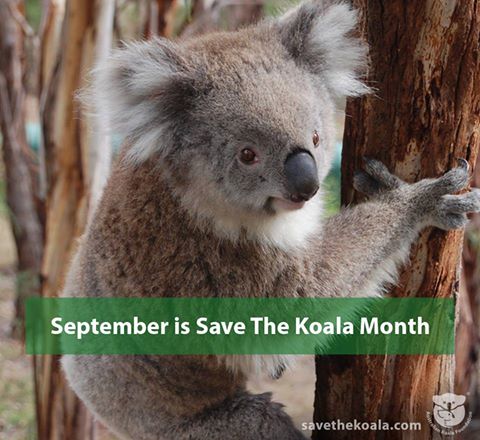

Have Your Say On The Amended Rocky Hill Coal Project Application
17.08.2016 : Departmental Media Release - Department of Planning and EnvironmentAn amended development application by Gloucester Resources Limited for the Rocky Hill Coal Project will be on exhibition from today for community consultation.
The Department of Planning and Environment is keen to hear the community’s views on the amended proposal which involves:- developing and operating an open-cut coal mine to produce up to two million tonnes of coal per year for up to 21 years
- constructing and operating a private coal haul road linking the Rocky Hill Coal Project with the Stratford Coal Complex, approximately nine kilometres to the south
- using the private haul road to transfer coal between 7:00 am and 6:00 pm only, Monday to Saturday
- using the private coal haul road to deliver heavy equipment and construction materials to the mine area
- rehabilitating the site
A spokesperson for the Department said the public should also view the modification application for the Stratford Extension Project, which is being exhibited simultaneously with the amended Rocky Hill Coal Project proposal.
“The public should also note the changes from a previous Rocky Hill Coal Project proposal which was exhibited in 2013,” a spokesperson said.
“Key changes in the amended proposal include three open cut pits instead of four and no night-time hours of work. Additionally, it proposes no evening hours of work for the first three years of the project.
“In the new proposal, coal would be hauled on a private haul road to the nearby Stratford Coal Mine. The Rocky Hill project would therefore not need a Coal Handling and Preparation Plant or a rail loop and train loading bin, or a coal conveyor. The amended proposal does not include:- constructing and operating an on-site Coal Handling and Preparation Plant
- constructing and operating a Rail Load-out Facility, including a rail loop and overhead loading bin, to dispatch the product coal to the Port of Newcastle
- developing a three kilometre partially-enclosed overland conveyor, to link the CHPP to the Rail Load-out Facility
- operating the mine during night-time hours
- operating the mine during evening hours for the first three years of the mining operations.
A spokesperson for the Department said the local community always has an opportunity to share their views.
“Community consultation is an integral part of the planning process and the applicant will have to respond to the feedback we receive.
“This feedback is taken into consideration as part of the assessment. “It’s easy to participate by going online and we encourage everyone to take a look and have their say.”
To make a submission or view the Environmental Impact Statement (EIS), visit www.majorprojects.planning.nsw.gov.au
Submissions can be made from 17 August until 14 October 2016.
Written submissions can also be made to: Department of Planning and EnvironmentAttn: Director – Resource AssessmentsGPO Box 39 Sydney NSW 2001
The application and EIS are also available to view in person at: Department of Planning and Environment, 23-33 Bridge Street, SydneyNature Conservation Council, Level 14, 338 Pitt Street, Sydney Mid Coast Council Offices:- 89 King Street, Gloucester - Breese Parade, Forster- 2 Pulteney Street, Taree- Customer Service Centre, 6 Church Lane, Stroud (9 am to noon)
Have your say on the modification application for Stratford Extension Project17.08.2016 : Departmental Media Release Author: Department of Planning and Environment
A modification application for the Stratford Extension Project will be on exhibition from today for community consultation.
The Department of Planning and Environment is keen to hear the community’s views on Stratford Coal Pty Ltd’s modification application which seeks to:- use a private haul road to transfer coal from the Rocky Hill Coal Project to the Stratford Coal Mine site
- construct an extension of the existing coal stockpile to accommodate Rocky Hill’s coal, and process coal from this stockpile through the existing Stratford Coal Handling and Preparation Plant
- place Rocky Hill product coal on the existing Stratford product coal stockpile
- load and dispatch Rocky Hill product coal from Stratford’s existing rail loop and coal load-out system
The community can also view the related but separate Rocky Hill Coal Mine amended development application also on exhibition currently, and make a submission.
A spokesperson for the Department of Planning and Environment said the local community always has an opportunity to share their views.
"Community consultation is an integral part of the planning process and the applicant will have to respond to the feedback we receive," the spokesperson said.
"This feedback is taken into consideration as part of the assessment. "It’s easy to participate by going online and we encourage everyone to take a look and have their say."
To make a submission and the view the modification application visit www.majorprojects.planning.nsw.gov.au
Submissions can be made from 17 August to 14 October 2016. Written submissions can also be made to:Department of Planning and EnvironmentAttn: Director – Resource AssessmentsGPO Box 39 Sydney NSW 2001 The application is also available to view in person at:Department of Planning and Environment, 23-33 Bridge Street, SydneyNature Conservation Council, Level 14, 338 Pitt Street, Sydney Mid Coast Council Offices:- 89 King Street, Gloucester - Breese Parade, Forster- 2 Pulteney Street, Taree- Customer Service Centre, 6 Church Lane, Stroud (9 am to noon)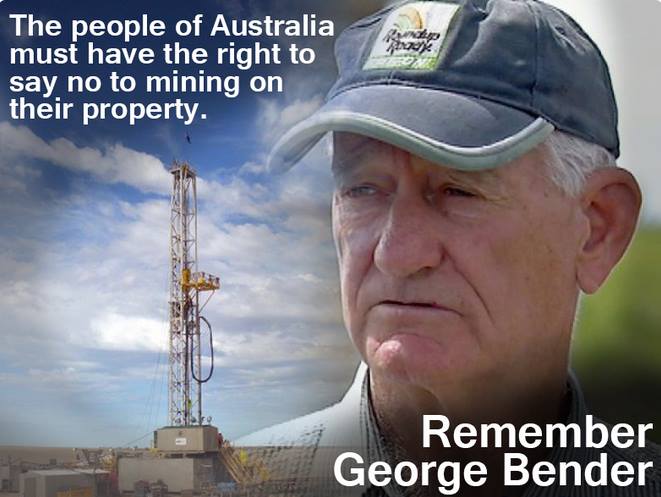
- developing and operating an open-cut coal mine to produce up to two million tonnes of coal per year for up to 21 years
- constructing and operating a private coal haul road linking the Rocky Hill Coal Project with the Stratford Coal Complex, approximately nine kilometres to the south
- using the private haul road to transfer coal between 7:00 am and 6:00 pm only, Monday to Saturday
- using the private coal haul road to deliver heavy equipment and construction materials to the mine area
- rehabilitating the site
- constructing and operating an on-site Coal Handling and Preparation Plant
- constructing and operating a Rail Load-out Facility, including a rail loop and overhead loading bin, to dispatch the product coal to the Port of Newcastle
- developing a three kilometre partially-enclosed overland conveyor, to link the CHPP to the Rail Load-out Facility
- operating the mine during night-time hours
- operating the mine during evening hours for the first three years of the mining operations.
- use a private haul road to transfer coal from the Rocky Hill Coal Project to the Stratford Coal Mine site
- construct an extension of the existing coal stockpile to accommodate Rocky Hill’s coal, and process coal from this stockpile through the existing Stratford Coal Handling and Preparation Plant
- place Rocky Hill product coal on the existing Stratford product coal stockpile
- load and dispatch Rocky Hill product coal from Stratford’s existing rail loop and coal load-out system

New Format As Pigs Fly In For Warrumbungles Concert
Media release: 9 August 2016 by NPWSA new format for the Warrumbungles Crooked Mountain Concert will see some of Australia’s up and coming country, rock and bluegrass artists perform at the signature Coonabarabran event on Saturday 5 November.
Coonabarabran National Park Visitor Centre Manager May Fleming said the concert was one of the region’s longest running community festivals.“The Crooked Mountain Concert has always featured a range of genres from the jazz tones of James Morrison to rock acts like year’s Boom Crash Opera.
“This year we’re delighted to have a really unique act in “The Pigs” leading an entertaining line up of artists.
“If you’ve never heard The Pigs unique way of performing well known pop songs in a toe-tapping hill billy style, then you’re in for a great surprise.
“Fresh from performances at Vivid Sydney and the Gympie Muster, The Pigs will be joined by Byron Bay Bluesfest openers Ivy as well as Golden Guitar nominee Mickey Pye, the tight harmonies of Bathurst duo Smith and Jones and local favourite Annie McKinnon.
“It’s a fresh line up and will continue our tradition of delivering great music in the phenomenal setting that is the Warrumbungle National Park, just designated as Australia’s first Dark Sky Park.
“We plan it with families in mind and there will be kids activities, local produce and non-alcoholic drinks available to purchase, visitors can also bring along their own picnic rugs, chairs, food and alcohol and of course camping is also available.
“This year we have been able to lower the ticket price to just $55 per adult, $50 Concession, $20 child (15 – 5 years) and under 5s are free,” Ms Fleming said.
Tickets will be on sale through Moshtix from 1 August, from the Warrumbungles National Park Visitor Centre in person or by phoning 6825 4364
Bus tickets from Coonabarabran and camping can also be purchased from the visitor centre. For more information visit the website: www.nationalparks.nsw.gov.au/crookedmountain
Medicare Items Review Backed By Health Professionals, Patients
More Than 2000 Medicine Brands To Drop In Price
Promising Drug Leads Identified To Combat Heart Disease
Twin Study Helps Unravel The Genetic Blueprint Of The Human Brain
- The data suggest that the volume of cortical and subcortical brain structures have moderate to strong genetic contributions (between 40 and 80%);
- The subcortical hippocampus, which play a key role in memory processes, has a genetic contribution greater than 70% in older people;
- Cortical structures, including the frontal lobe (movement, memory and motivation) and occipital lobe (visual processing), have genetic contributions greater than 70%;
- There is symmetry in the brain: corresponding structures in the left and right hemispheres were influenced by the same genetic factors;
- And finally, their data suggests that there are three genetically correlated clusters within the brain. These are regions where the same sets of genes seem to be influencing multiple structures. One cluster involves the four cortical lobe structures, while the other two involve clusters of subcortical structures.
Rehabilitation To Reduce Reoffending
Australian Industry To Benefit From Replacement Aviation Refuelling Vehicles
Business Peak Body Calls For Companies To Give Back To Students
Rolling Stones Exhibition Coming To Sydney
Heritage Listed Mamre House Restored To Its Former Glory
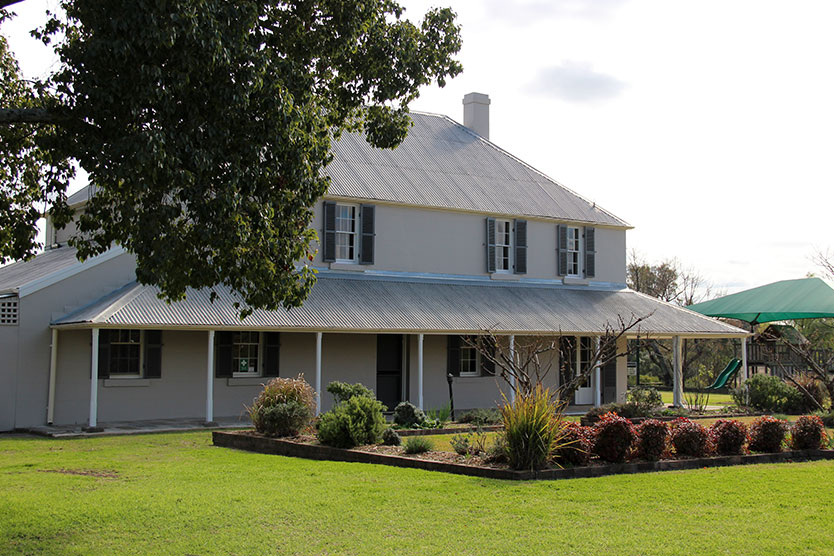
Women Do Ask For Pay Rises But Don’t Get Them

Google X’s Dr Tom Insel To Deliver UNSW’s Wallace Wurth Public Lecture
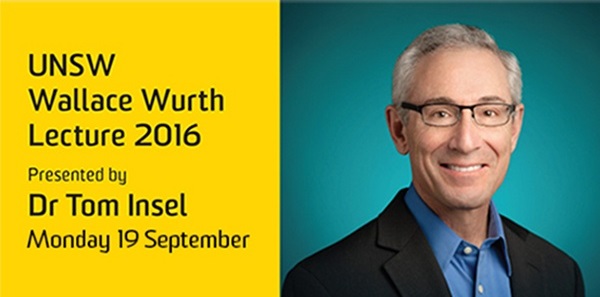
Illegal Fishing Will Not Be Tolerated
Australia Post Commemorates 400th Anniversary Of Hartog's Landing On The Western Coast Of Australia
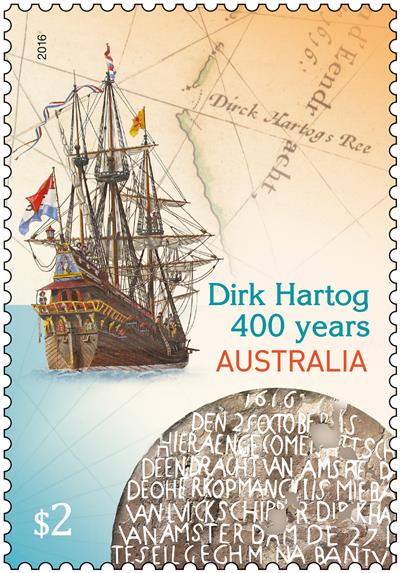 On 25 October 1616, Captain Dirk Hartog of the Dutch East India ship Eendracht made landfall at an island off the coast of Shark Bay, Western Australia. Hartog's ship had lost its way after setting out from Holland for Batavia in the Dutch East Indies.
On 25 October 1616, Captain Dirk Hartog of the Dutch East India ship Eendracht made landfall at an island off the coast of Shark Bay, Western Australia. Hartog's ship had lost its way after setting out from Holland for Batavia in the Dutch East Indies.The Singing Ringing Tree
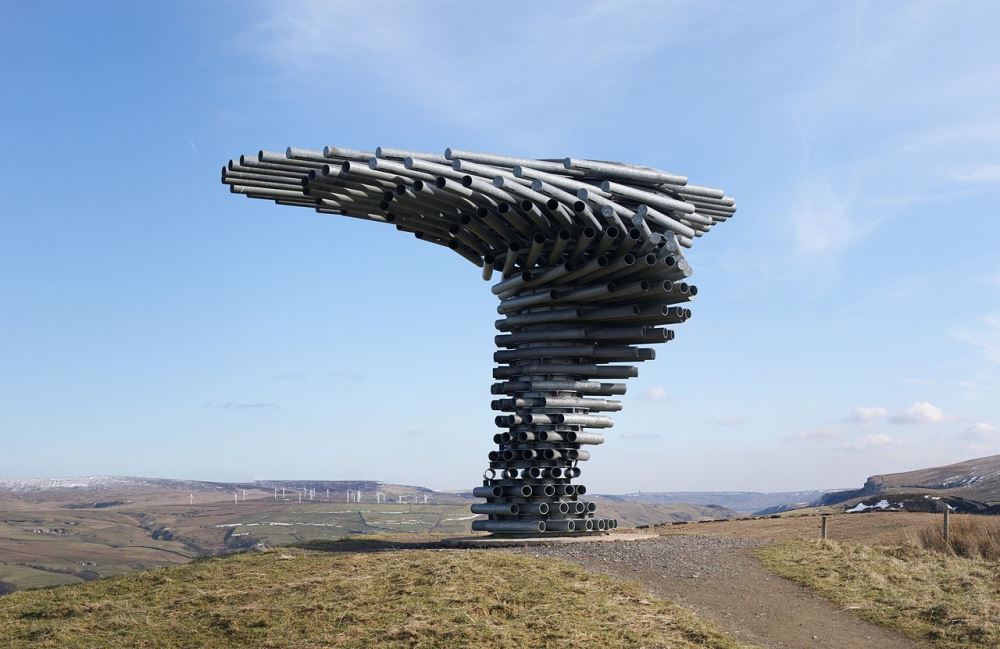
Then & Now
.jpg?timestamp=1473215716049)
Disclaimer: These articles are not intended to provide medical advice, diagnosis or treatment. Views expressed here do not necessarily reflect those of Pittwater Online News or its staff.